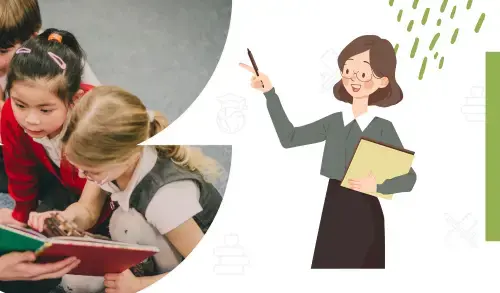Adaptive Learning Today’s education no longer resembles what we might have experienced Today, many new solutions are being used to help us learn. They make it much easier so that we are able to learn faster and more. A great deal of equipment is used in schools these days to facilitate the work of students. They help in the development of young learners. Nowadays, it is very common for chalkboards in schools to be replaced by interactive or multimedia whiteboards or graphic projectors.
Today, computers are also increasingly used instead of standard books, primers, or notebooks. From an early age, each pupil has his or her own individual computer at school, which is used for learning and lessons. This has its advantages, but also disadvantages.
TREND 1: Adaptive Learning
“Do you think we all learn in the same way?” – asked French start-up Domoscio (a company dedicated to using Big Data in the learning process).
It’s obvious that we don’t. After all, each of us is a completely different person. Adaptive learning is nothing more than personalizing learning and targeting it to the needs and abilities of individual learners.
This emphasis on adapting the content to the individual learner’s level of understanding, on exploring and checking how each individual in the class copes with a particular part of the material was evident at every turn. This was not only the case in the workshops dedicated to developing the individual talents of students using new technologies.
This trend was also clearly visible in solutions such as Google for Education, Microsoft in Education, Apple Classroom, or BidForWriting which allow teachers to not only track the progress of the whole class but also of individuals. In addition, technology provides the opportunity for teachers to share materials individually with specific students, helping young people to learn at their convenience in a time slot that suits them.
TREND 2: Social Learning
Social networks are changing the way information is distributed. They are now also essential for exchanging thoughts, and ideas or gaining knowledge from people we have never met before. Social networks offer almost unlimited opportunities for face-to-face and real-time communication. And it is not just that many people of the younger generation no longer use email at all, but instead use social media for communication. Also, the biggest technology companies on the market are creating their own networks of educators, schools, and teachers to enable the exchange of experiences, best practices, and ideas.
This is how Apple, for example, operates with its Apple Teacher Learning Center program. The same is true of Microsoft, which last year developed a completely new version of the Minecraft game, popular not only with children. A version that is aimed at the education sector. An entire social network has been created around this version of the game, where teachers can add the worlds they have created and the accompanying lectures so that others can use and share them.
The HundrED initiative – which is part of Finland’s official centenary celebrations in 2017 – seems to have similar ambitions. HundrED is a kind of birthday gift that Finland, famous for its exceptional level of education, is giving to the whole world. At https://hundred.org you can find descriptions of the best ideas, initiatives, and educational innovations not only from Finland itself but from all over the world. All these good practices are described and documented and we can use them, contact their authors and share them completely free of charge.
TREND 3:Adaptive Learning Gamification
‘Gamification’ is a word that seems to have been trotted out recently. It is one of those concepts that has lost its power through overuse. But a presentation by Lauri Järvilehto of the Finnish company Lightneer could effectively change attitudes toward how we view gamification.
It is quite obvious that our educational systems are not equipped to deal with the challenges posed to them by a world that is changing faster and faster every day. The goal of gamification, as understood by Lauri Järvilehto, is accessible and engaging learning for all. In fact, every gamer knows that a good game is an immersive and informative experience.
For Lightneer, educational games must be as playable as the top ones from the top of the sales charts. They need to be fun and challenging at the same time. And most importantly, gamification can be used in basically any subject, in teaching physics, mathematics, or history. But Järvilehto stressed that it is important to remember that no game, even the best-crafted one, can infect students with a passion for learning like an engaged and loving teacher.
TREND 4: Microlearning
No one spoke directly about this trend, yet it was evident at every beleaguered booth. Microlearning is about delivering content to learners in small, specific ‘doses’. Microlearning was evident at the Google for Education booth, where step-by-step instructions were given on how to use the possibilities this program gives to teachers or school principals. At the Adobe stand, staff taught specific solutions that teachers and educators can use with the graphics or video editing software included in the packages for education. Discovery for Education taught how to use virtual reality and Microsoft taught how to find their way around the world of Minecraft.
All of these stands simply used the same teaching mechanism as the popular online tutorials. It was apparent that short, concrete doses of knowledge on how to use particular technological solutions were extremely popular.
It is worth taking advantage of these trends in the USA as well. The world around us is changing at a dizzying pace. Education in the future will require constant learning, creativity, cooperation skills, and flexibility.
We can teach in a classic way, as we have done so far, but thanks to technology we can make education an adventure, a challenge, and fun. We can make children and young people want to learn for life.


